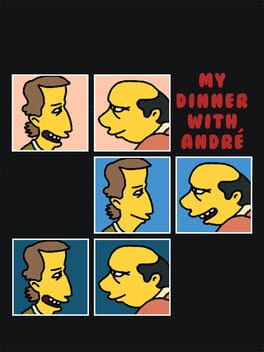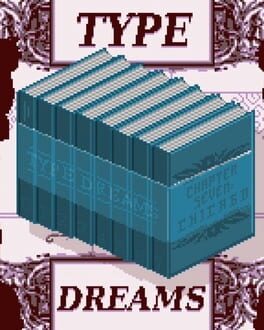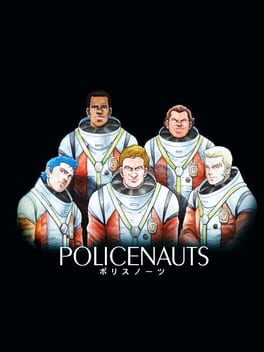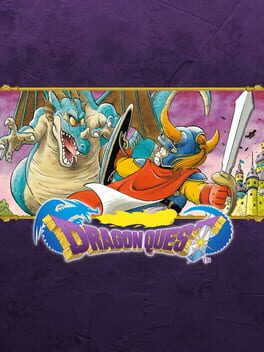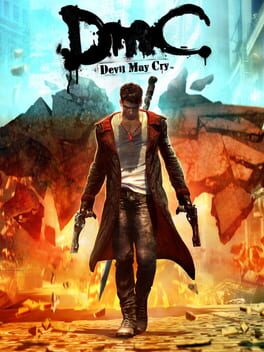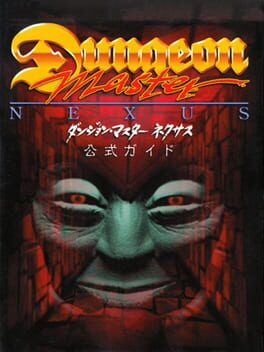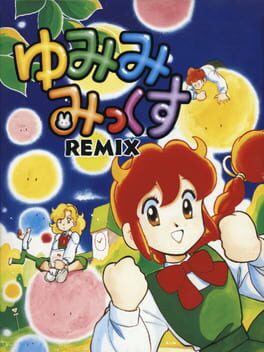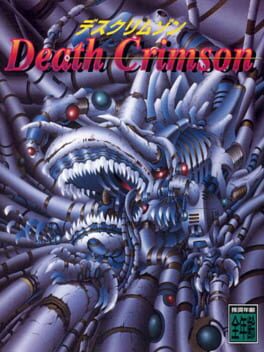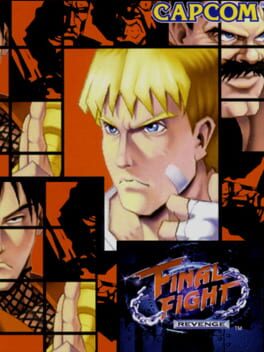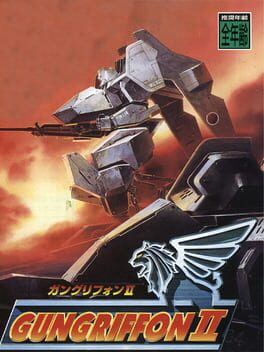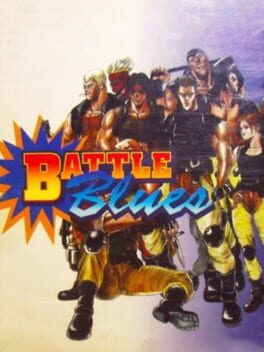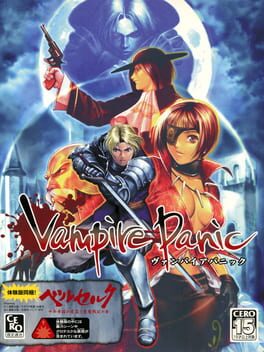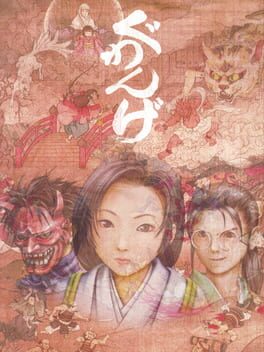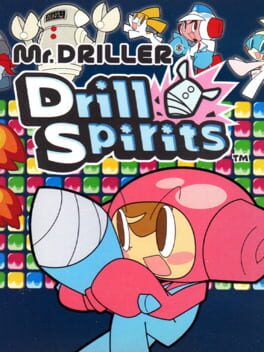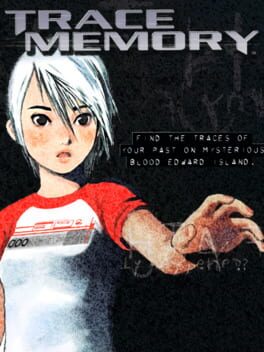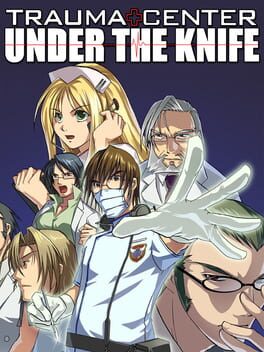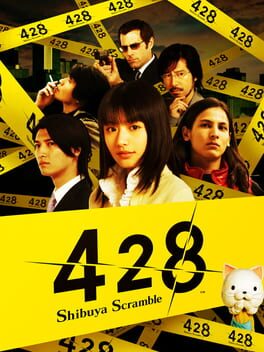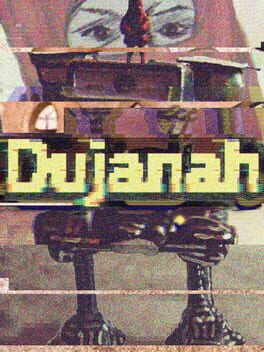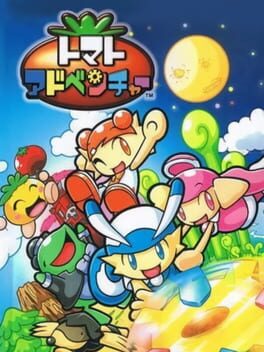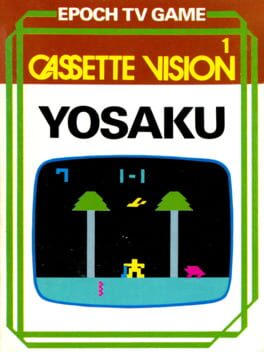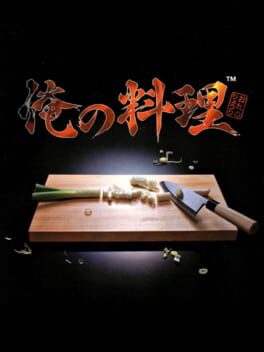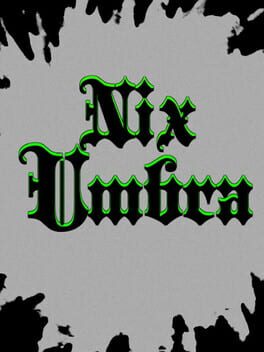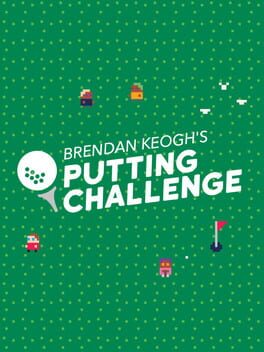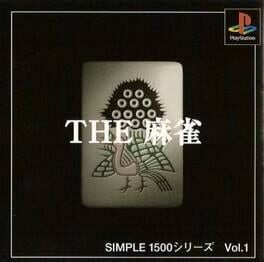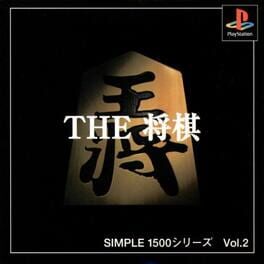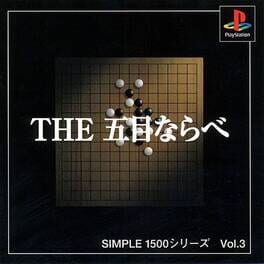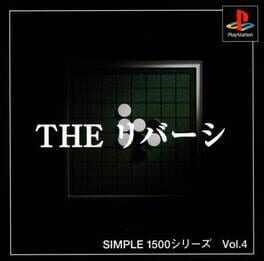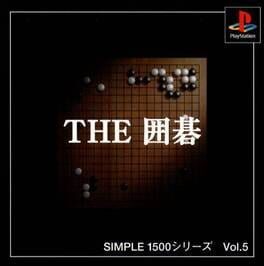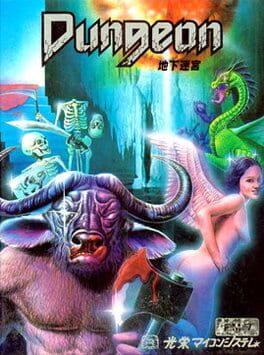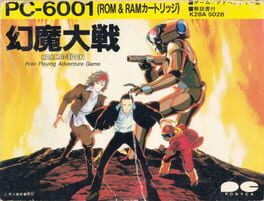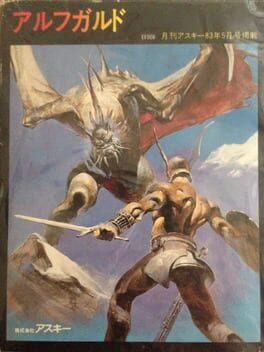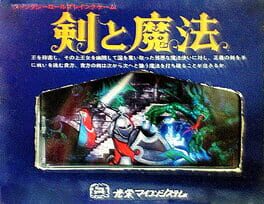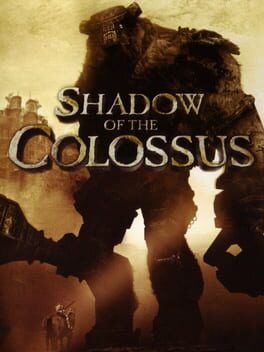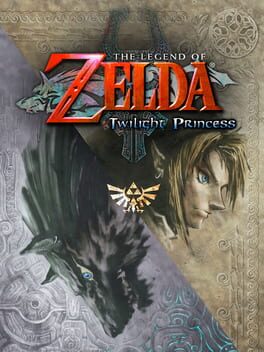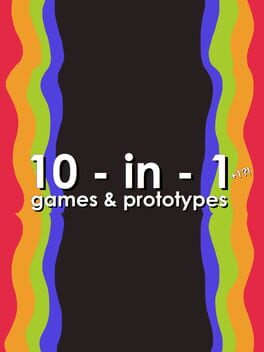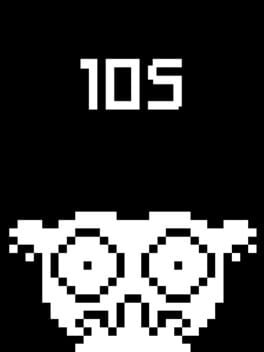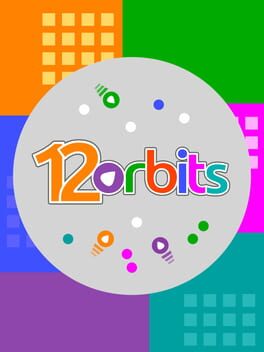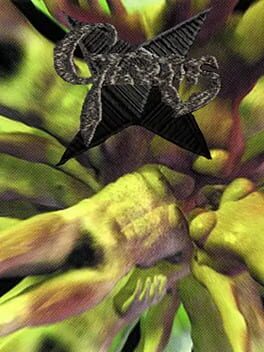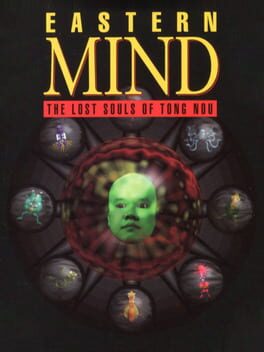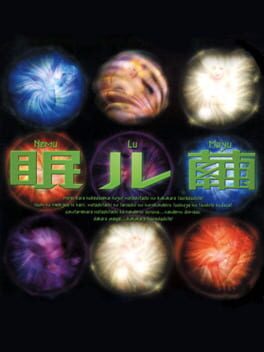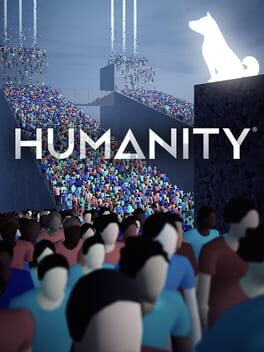scar654
11 reviews liked by scar654
My Dinner with André
2022
Type Dreams
2019
in an episode of gamespot’s audio logs, disco elysium’s lead designer and writer robert kurvitz was asked to discuss ZA/UM’s approach to CRPG design, in which he makes clear the title’s great tabletop roleplaying game influence, contrasts disco elysium against modern CRPGS, and elucidates the rationale behind certain UI decisions the game had made. one of the very first things kurvitz highlights, and what was apparently one of the decisions given primacy in pre-production, was the concept of placing the text box in the righthand side of the screen in contrast to the game’s contemporaries, even outside the CRPG genre, which typically slot the text boxes in the lower middle of the screen. the benefits to this alternative organization seem immediately obvious as kurvitz spells them out: increased screen real estate, far more interesting visual composition, and a modality which seemed to emulate the engrained habits of run-of-the-mill technology. peer at disco elysium’s textbox and your mind may not immediately pick up on the contours of its design, but your subconscious will instinctively understand it relates to the modern desktop experience. it innately resembles the windows toolbar, where the clock and calendar is – the screen is visually ‘weighted’ to the right, where the center of gravity is, and it reflects the placement of the players right hand on the keyboard.
the deceptive genius of this UI design is that it wasn’t enough to simply reflect a desktop, which disco elysium’s target demographic was instinctually bound to – ZA/UM wanted to snuff out any and all competitors. that means taking inspiration from unlikely sources, one of which was social media. this helps explain why the prose of disco elysium is so confrontational, sharp, abrasive, sensational; it explains why the text-box was designed to reflect an addictive scrolling experience ala twitter; and it builds upon centuries of entrenched human behaviour in its column design, which may inadvertently reflect a phone but also reflects the structure of a newspaper article. in an era where developers have now fully committed themselves towards eradicating loading screens in a veiled effort to curb the impoverished, stimulation-craving instincts of their player bases (a major hardware decision which is replete with as many pros as cons), ZA/UM subtly adapted the topography of phones that so many players were already used to for their own purposes.
kurvitz’s final salvo is illuminating. every element of this design is an amendment which reflects a critical problem in the games marketability, that disco elysium, judging by its phenomenal success, ameliorated fully: how do you sell a modern CRPG that is simultaneously defined by its lack of combat and by its verbosity? well, it’s simple. everyone says they don’t like reading and claims they don’t want to read – but reading is all we do on social media, in private messages, in news articles. we take it for granted. player retention was a big problem for ZA/UM, so the designers intelligently made what seems like a very easy observation, but then engineered everything about the game’s flow in order to manufacture a state that hopefully will allow players to immerse themselves and to truly salivate over every last written word the game has to offer.
so, reading is something we do every day. no-brainer. but the same exists for writing. both exist in a connected equilibrium. just as we read every day, we write just about every day – whether we realize it or not. some research even suggests that where the mind is allowed to wander while reading, neurons will roar to life and the brain will mimic and simulate the act of pen flowing on paper, gliding betwixt margins with grace and individualized efficacy.
it would be more accurate, however, to make the claim that we’re typing every day.
are typing and writing of the same scholarship? could one make the claim that writing is therefore impoverished by the usurpation of typing – the same way kurvitz attributed to his audience a kind of destitution of readership? reflecting on this opens the floodgates of a perennial chirographic concern. the digital epoch has not responded with kindness to the eloquence of handwriting. surveys often suggest swathes of people go more than half a year without handwriting, and countries that are at the forefront of educational theory like finland suggest that it may no longer bear the same relevance on day-to-day activities as it once used to. the practice is fading, its dominance curtailed by the dissemination of keyboarding. this is in spite of a marked increase in literature suggesting the many benefits of handwriting. among the myriad cognitive benefits there are particularly noteworthy virtues such as attention sustenance, increased capacity for memory, improved self-regulation, and the ability to plan ahead. children who learn to write by hand are known to activate adult-like pathways in their minds which aid in facilitation of improved memory.
and for many, handwriting is an exercise in aesthetic pleasures, a distinct mark of individuality, and a reiteration of a practice undertaken by even their ancestry that innately links mind and soul, body and space, the sensate and the insensate, an unwitting cooperation between all the ontological elements of lived experience that inform existence and being, a unification of self and language. there is the concern that the abstractions of writing, that once in the past were nothing more than pictographs painstakingly carved into slabs and yet was still a decidedly intellectual, tactile, expressive, and intimate practice, are lost in the mechanical era and the complex beauty of it has vanished. many continue to remind and advocate for the pursuance of ‘bilingual writing’ – education that fosters children who can handwrite as well as they type and thus don’t fail to attend to their expanding minds. on a more anecdotal level, all of this rings as true – too often does the pursuit of typing education boil it all down to a callous, impersonal drudgery that serves only to prepare children for the rampant dehumanization inherent to the workforce.
if any of this discourse seems like a relatively modern concern, don’t worry – it isn’t. let me take a quick step back. walter j. ong indicated that our history in knowledge storage can be divided into two phases: the oral-to-literate stage and the chirographic-to-print stage. in the former stage, culture began to transition into a society that relied more and more on the written word and began to leave oral tradition behind – as far back as 3500 BC, sumerians sought to preserve their history by capturing and transcribing oration. in the latter stage, the individual handwritten texts began to be mechanically produced and widely disseminated by means of the printing press. this evolution of writing technology invariably altered the way humanity came to grips with their own awareness and how this changed the epistemology of the time. in ong’s view, it was this shift from the oral tradition to a society of literacy that broke apart the old ways of tribal unity, as fostering literacy operated in tandem with greater levels of individuality. the chirographic-to-print stage of the 1500’s only further reinforced this.
it is here where i must remind that typing is the apotheosis of these differing stages of written tradition, and one that has remained in the public consciousness since the late 1800s – far from a modern invention. the first commercial typewriters were made available in 1874, and the first stenograph was invented in 1879. the history of typing predates the personal computer. but nevertheless it is the fixed rigidity of typing – when taken from its latent form and iterated upon, recontextualized in the digital epoch as an apparatus to be used with the computer – that ong sees as a synthesis of the oral and the literate. it’s a kind of folding together of space and time, one of the arguments of this viewpoint being the idea that the premise of instantaneity central to typing on a computer transforms printed word into something more akin to oration and therefore reunites our own epoch with the era of oral tradition as a result of totally reconfigured relationships between all the constituent elements of the past two stages: the writer, the text, the audience, the interfacing, the medium.
others are not so kind – any technological evolution brings trade-off, and some philosophers note that history is simply an unfolding narrative of intangible gains and omitted losses. of the many philosophers to grapple with the heady question of how the modalities of writing inform existence, heidegger is an authoritative voice and spoke often of the cultural loss typing imprinted on society. it is his view, and that of his supporters, that typing represents something perverse and impersonal, something amputational in logic. the body is diminished and conveyance is thus diminished too; the essential realm of word and hand is shattered, depriving the person of dignity and irreversibly altering our relationship with language and distances ourselves from it, changing something from beautifully abstract transmission to simple transposition. certainly, this view seems almost supported by modern empirical studies that uncannily echo some of these concerns!
and yet, type dreams seems to believe otherwise, and treats all text within as something to be given primacy, something that is profound and bold and transcendent. richard hofmeier’s second developmental outing is an anachronism-laden victorian-set game about typing. so committed to typing it is that everything about interfacing with the game involves the use of keys rather than the mouse, removing yet again any semblance of a bodily gesture that might conflate modern typing with traditional handwriting. you enter a username and password to begin the typist’s journey, and from there depressions of the spacebar cycle through menus, tapping the enter key confirms, hitting the escape key…escapes, and the very act of typing itself provides shortcuts with which to access menus.
as you play type dreams, you get a greater sense of where its priorities lie, and it’s something coincidentally shared with tetris effect, another game i recently played and appreciated: the answer is transcendence. actually, it would be far more accurate to say that what type dreams pursues is something close to ong’s vision of modern typing: complete synchronicity across boundaries of space and time. and it does so by providing an utterly unique audiovisual experience that goes far beyond the simple educational value of a typing game. in type dreams you find a wealth of categories of typing exercises: rote exercises, poetry, classical literature, even smut and songs/lyrics. and in each ‘stage’, reconfigured as a kind of desperate arcade scenario, the player, alongside their chosen imitation avatar, competes with only themselves for faster and faster words-per-minutes, for fewer errors, for unapproachable streaks of correctly placed letters. at the onset of the game you must choose between digital keyboard and typewriter and i must wholly recommend the typewriter – passages are smartly fragmented by the continual rhythm of the player sliding their fingers across function keys f1-f12 to emulate the carriage of a typewriter, a sensory experience unlike anything else that inadvertently calls to mind musicality and instrumentation, suggesting that rather than representing a kind of blasphemous automatism typing may well be a new kind of instrument. a tidbit that is particularly noteworthy and relevant to my argument: typing activates an area in your brain that is equivalent to what drumming activates in your brain.
and it is this kind of ‘music’ and kinaesthetic experience that forms the basis of what type dreams achieves so excellently, as so few games do, interrogating ideas that similarly, so few games do. in type dreams the keyboard is an instrument, a weapon, a guide, an anachronism, a representation of shared consciousness, reflecting an understanding of the infinite forms of text as well. type out these chords of text via an angry letter to a newspaper and listen to the game channeling these frustrations in the forms of aggressive grunts with each letter misspelled or each error in keystroke; explore the textual melodies of some poetry and watch as the visuals accompanying your office change, freeing the mind and allowing poet and player and avatar to be intimately linked like nothing else; type out an account of keyboard rebellion and understand that the drudgery linked between workforce and the word processor can be subverted by the daring, that there is more to text than copying or correspondence; be transported across space and time to verbose scrawlings on prison walls, to the history of stenography, to socrates on trial. it’s a thrillingly evocative experience that lessens the temporal and spatial boundaries of history and literature and that is characterized by efficiency and dexterity in a way that recalls music, so it helps that the music accompanying each stage is really solid – the bimanual and repetitive nature of typing necessitates an audiovisual layer to allow the mind to coalesce with text and wander freely.
all of this serves to strongly re-evaluate typing in the modern era and to rebut most of the concerns of heidegger with new presumptions on what it even means to type, and it allows the self to feel the keyboard as something other than a symbol of workplace productivity. it filters in expression and individuality back into typist methodology, which may explain why there is no mechanical difference between the two typewriters on offer – only an aesthetic one. you begin to pick up on the subtleties of typing’s topography, on how hands moving across keys can influence emotion and thought, on how it serves as an appropriate contrast to the unimanual nature of handwriting. handwriting allows for reflection, for contemplation, but what type dreams suggests is that typing can become a tool for embodiment. this makes sense given the increased tempo that contrasts the two modes of writing, but it’s yet another point in the game’s favour- can you still feel the significance of the game’s text in spite of that breakneck pace, or has it slipped through the permeating fog of synchronicity? type dreams works its ass off to have your answer be a resounding yes. yes, in spite of the kaleidoscopic nature of digital text, in spite of its immaterial and infinite nature, in spite of the concern for the lessened significance of text and how it may erode at our senses and reduce our attention into fragments, transcendence can still occur. meaning can still be felt. text hasn’t necessarily been impoverished – not when it’s so lived-in.
that isn’t to say the game is perfect. in fact, the game is laughably imperfect, probably the most laughably imperfect game i've given such a high rating. it’s buggy, there are some UI issues and several technical dilemmas, and the greatest kicker of all: it’s unfinished. as i tried to unlock more of the game’s levels in proto-drakengardian fashion i came to realize there was only so much available, that the game was in an adolescent state and might never see completion. yet so much of the game contains the seeds of what is such an unexpectedly ideal game for me that i cannot help but give it such high accolades – the immensity of the experience is deserving of far more attention and far more interrogation from far smarter figures than i.
richard hofmeier is a complex figure for the games media to reckon with. after the smash hit success of cart life in indie games circles, he vanished from the public eye and released cart life in open source format, citing its imperfection as a barrier to its permissibility as a for-profit release. type dreams was his second major outing, released on itch.io in an incomplete state, originally at a price so that hofmeier could make ends meet. by his own admission, he disliked the fact that he had to do so, but he had been working away at this and several other projects over the course of several years, so he had to release at least something to get past his perfectionist tendency. since then the game has received several inconsistent updates before the pipeline of developer communication shut off entirely without warning in november of last year. currently, the game is listed as cancelled on itch.io. the version of the game you can download, uploaded 81 days ago, is listed as td_final.zip. when you try to click on the game’s “story” mode (one might assume the game’s main campaign would have been papers, please-esque; reliance on electricity was a drawback for the digital keyboard made apparent to the player when they are prompted to choose their instrument of choice), you are greeted with the following message:
“These stories were boring. Consider making up new ones; new stories about [PLAYER NAME] might be worth writing.”
as it stands, i have no way of knowing if the sentiment of this message and the title’s abrupt and unquestioned ‘cancellation’ are related. but in my heart of hearts, i hope hofmeier returns to this project. there’s nothing else like it.
https://hofmeier.itch.io/type-dreams
ALRIGHT, blanket announcement: on top of the game being available on the internet archive, as was wisely pointed out by DJSCheddar, MrPixelton was kind enough to get a mega link up and running for type dreams using their copy of the game since my laptop was indisposed. so shouts out to you guys, you both rock, and all of it helps to keep this game preserved and alive. i think the internet archive solution will be the public one and ill keep the mega link open for private channels/as a backup. thanks everyone for your efforts! whenever hofmeier returns to the public eye please try to financially support him, we need this kind of creativity in the medium
be sure to reach out if you'd like the mega link!
the deceptive genius of this UI design is that it wasn’t enough to simply reflect a desktop, which disco elysium’s target demographic was instinctually bound to – ZA/UM wanted to snuff out any and all competitors. that means taking inspiration from unlikely sources, one of which was social media. this helps explain why the prose of disco elysium is so confrontational, sharp, abrasive, sensational; it explains why the text-box was designed to reflect an addictive scrolling experience ala twitter; and it builds upon centuries of entrenched human behaviour in its column design, which may inadvertently reflect a phone but also reflects the structure of a newspaper article. in an era where developers have now fully committed themselves towards eradicating loading screens in a veiled effort to curb the impoverished, stimulation-craving instincts of their player bases (a major hardware decision which is replete with as many pros as cons), ZA/UM subtly adapted the topography of phones that so many players were already used to for their own purposes.
kurvitz’s final salvo is illuminating. every element of this design is an amendment which reflects a critical problem in the games marketability, that disco elysium, judging by its phenomenal success, ameliorated fully: how do you sell a modern CRPG that is simultaneously defined by its lack of combat and by its verbosity? well, it’s simple. everyone says they don’t like reading and claims they don’t want to read – but reading is all we do on social media, in private messages, in news articles. we take it for granted. player retention was a big problem for ZA/UM, so the designers intelligently made what seems like a very easy observation, but then engineered everything about the game’s flow in order to manufacture a state that hopefully will allow players to immerse themselves and to truly salivate over every last written word the game has to offer.
so, reading is something we do every day. no-brainer. but the same exists for writing. both exist in a connected equilibrium. just as we read every day, we write just about every day – whether we realize it or not. some research even suggests that where the mind is allowed to wander while reading, neurons will roar to life and the brain will mimic and simulate the act of pen flowing on paper, gliding betwixt margins with grace and individualized efficacy.
it would be more accurate, however, to make the claim that we’re typing every day.
are typing and writing of the same scholarship? could one make the claim that writing is therefore impoverished by the usurpation of typing – the same way kurvitz attributed to his audience a kind of destitution of readership? reflecting on this opens the floodgates of a perennial chirographic concern. the digital epoch has not responded with kindness to the eloquence of handwriting. surveys often suggest swathes of people go more than half a year without handwriting, and countries that are at the forefront of educational theory like finland suggest that it may no longer bear the same relevance on day-to-day activities as it once used to. the practice is fading, its dominance curtailed by the dissemination of keyboarding. this is in spite of a marked increase in literature suggesting the many benefits of handwriting. among the myriad cognitive benefits there are particularly noteworthy virtues such as attention sustenance, increased capacity for memory, improved self-regulation, and the ability to plan ahead. children who learn to write by hand are known to activate adult-like pathways in their minds which aid in facilitation of improved memory.
and for many, handwriting is an exercise in aesthetic pleasures, a distinct mark of individuality, and a reiteration of a practice undertaken by even their ancestry that innately links mind and soul, body and space, the sensate and the insensate, an unwitting cooperation between all the ontological elements of lived experience that inform existence and being, a unification of self and language. there is the concern that the abstractions of writing, that once in the past were nothing more than pictographs painstakingly carved into slabs and yet was still a decidedly intellectual, tactile, expressive, and intimate practice, are lost in the mechanical era and the complex beauty of it has vanished. many continue to remind and advocate for the pursuance of ‘bilingual writing’ – education that fosters children who can handwrite as well as they type and thus don’t fail to attend to their expanding minds. on a more anecdotal level, all of this rings as true – too often does the pursuit of typing education boil it all down to a callous, impersonal drudgery that serves only to prepare children for the rampant dehumanization inherent to the workforce.
if any of this discourse seems like a relatively modern concern, don’t worry – it isn’t. let me take a quick step back. walter j. ong indicated that our history in knowledge storage can be divided into two phases: the oral-to-literate stage and the chirographic-to-print stage. in the former stage, culture began to transition into a society that relied more and more on the written word and began to leave oral tradition behind – as far back as 3500 BC, sumerians sought to preserve their history by capturing and transcribing oration. in the latter stage, the individual handwritten texts began to be mechanically produced and widely disseminated by means of the printing press. this evolution of writing technology invariably altered the way humanity came to grips with their own awareness and how this changed the epistemology of the time. in ong’s view, it was this shift from the oral tradition to a society of literacy that broke apart the old ways of tribal unity, as fostering literacy operated in tandem with greater levels of individuality. the chirographic-to-print stage of the 1500’s only further reinforced this.
it is here where i must remind that typing is the apotheosis of these differing stages of written tradition, and one that has remained in the public consciousness since the late 1800s – far from a modern invention. the first commercial typewriters were made available in 1874, and the first stenograph was invented in 1879. the history of typing predates the personal computer. but nevertheless it is the fixed rigidity of typing – when taken from its latent form and iterated upon, recontextualized in the digital epoch as an apparatus to be used with the computer – that ong sees as a synthesis of the oral and the literate. it’s a kind of folding together of space and time, one of the arguments of this viewpoint being the idea that the premise of instantaneity central to typing on a computer transforms printed word into something more akin to oration and therefore reunites our own epoch with the era of oral tradition as a result of totally reconfigured relationships between all the constituent elements of the past two stages: the writer, the text, the audience, the interfacing, the medium.
others are not so kind – any technological evolution brings trade-off, and some philosophers note that history is simply an unfolding narrative of intangible gains and omitted losses. of the many philosophers to grapple with the heady question of how the modalities of writing inform existence, heidegger is an authoritative voice and spoke often of the cultural loss typing imprinted on society. it is his view, and that of his supporters, that typing represents something perverse and impersonal, something amputational in logic. the body is diminished and conveyance is thus diminished too; the essential realm of word and hand is shattered, depriving the person of dignity and irreversibly altering our relationship with language and distances ourselves from it, changing something from beautifully abstract transmission to simple transposition. certainly, this view seems almost supported by modern empirical studies that uncannily echo some of these concerns!
and yet, type dreams seems to believe otherwise, and treats all text within as something to be given primacy, something that is profound and bold and transcendent. richard hofmeier’s second developmental outing is an anachronism-laden victorian-set game about typing. so committed to typing it is that everything about interfacing with the game involves the use of keys rather than the mouse, removing yet again any semblance of a bodily gesture that might conflate modern typing with traditional handwriting. you enter a username and password to begin the typist’s journey, and from there depressions of the spacebar cycle through menus, tapping the enter key confirms, hitting the escape key…escapes, and the very act of typing itself provides shortcuts with which to access menus.
as you play type dreams, you get a greater sense of where its priorities lie, and it’s something coincidentally shared with tetris effect, another game i recently played and appreciated: the answer is transcendence. actually, it would be far more accurate to say that what type dreams pursues is something close to ong’s vision of modern typing: complete synchronicity across boundaries of space and time. and it does so by providing an utterly unique audiovisual experience that goes far beyond the simple educational value of a typing game. in type dreams you find a wealth of categories of typing exercises: rote exercises, poetry, classical literature, even smut and songs/lyrics. and in each ‘stage’, reconfigured as a kind of desperate arcade scenario, the player, alongside their chosen imitation avatar, competes with only themselves for faster and faster words-per-minutes, for fewer errors, for unapproachable streaks of correctly placed letters. at the onset of the game you must choose between digital keyboard and typewriter and i must wholly recommend the typewriter – passages are smartly fragmented by the continual rhythm of the player sliding their fingers across function keys f1-f12 to emulate the carriage of a typewriter, a sensory experience unlike anything else that inadvertently calls to mind musicality and instrumentation, suggesting that rather than representing a kind of blasphemous automatism typing may well be a new kind of instrument. a tidbit that is particularly noteworthy and relevant to my argument: typing activates an area in your brain that is equivalent to what drumming activates in your brain.
and it is this kind of ‘music’ and kinaesthetic experience that forms the basis of what type dreams achieves so excellently, as so few games do, interrogating ideas that similarly, so few games do. in type dreams the keyboard is an instrument, a weapon, a guide, an anachronism, a representation of shared consciousness, reflecting an understanding of the infinite forms of text as well. type out these chords of text via an angry letter to a newspaper and listen to the game channeling these frustrations in the forms of aggressive grunts with each letter misspelled or each error in keystroke; explore the textual melodies of some poetry and watch as the visuals accompanying your office change, freeing the mind and allowing poet and player and avatar to be intimately linked like nothing else; type out an account of keyboard rebellion and understand that the drudgery linked between workforce and the word processor can be subverted by the daring, that there is more to text than copying or correspondence; be transported across space and time to verbose scrawlings on prison walls, to the history of stenography, to socrates on trial. it’s a thrillingly evocative experience that lessens the temporal and spatial boundaries of history and literature and that is characterized by efficiency and dexterity in a way that recalls music, so it helps that the music accompanying each stage is really solid – the bimanual and repetitive nature of typing necessitates an audiovisual layer to allow the mind to coalesce with text and wander freely.
all of this serves to strongly re-evaluate typing in the modern era and to rebut most of the concerns of heidegger with new presumptions on what it even means to type, and it allows the self to feel the keyboard as something other than a symbol of workplace productivity. it filters in expression and individuality back into typist methodology, which may explain why there is no mechanical difference between the two typewriters on offer – only an aesthetic one. you begin to pick up on the subtleties of typing’s topography, on how hands moving across keys can influence emotion and thought, on how it serves as an appropriate contrast to the unimanual nature of handwriting. handwriting allows for reflection, for contemplation, but what type dreams suggests is that typing can become a tool for embodiment. this makes sense given the increased tempo that contrasts the two modes of writing, but it’s yet another point in the game’s favour- can you still feel the significance of the game’s text in spite of that breakneck pace, or has it slipped through the permeating fog of synchronicity? type dreams works its ass off to have your answer be a resounding yes. yes, in spite of the kaleidoscopic nature of digital text, in spite of its immaterial and infinite nature, in spite of the concern for the lessened significance of text and how it may erode at our senses and reduce our attention into fragments, transcendence can still occur. meaning can still be felt. text hasn’t necessarily been impoverished – not when it’s so lived-in.
that isn’t to say the game is perfect. in fact, the game is laughably imperfect, probably the most laughably imperfect game i've given such a high rating. it’s buggy, there are some UI issues and several technical dilemmas, and the greatest kicker of all: it’s unfinished. as i tried to unlock more of the game’s levels in proto-drakengardian fashion i came to realize there was only so much available, that the game was in an adolescent state and might never see completion. yet so much of the game contains the seeds of what is such an unexpectedly ideal game for me that i cannot help but give it such high accolades – the immensity of the experience is deserving of far more attention and far more interrogation from far smarter figures than i.
richard hofmeier is a complex figure for the games media to reckon with. after the smash hit success of cart life in indie games circles, he vanished from the public eye and released cart life in open source format, citing its imperfection as a barrier to its permissibility as a for-profit release. type dreams was his second major outing, released on itch.io in an incomplete state, originally at a price so that hofmeier could make ends meet. by his own admission, he disliked the fact that he had to do so, but he had been working away at this and several other projects over the course of several years, so he had to release at least something to get past his perfectionist tendency. since then the game has received several inconsistent updates before the pipeline of developer communication shut off entirely without warning in november of last year. currently, the game is listed as cancelled on itch.io. the version of the game you can download, uploaded 81 days ago, is listed as td_final.zip. when you try to click on the game’s “story” mode (one might assume the game’s main campaign would have been papers, please-esque; reliance on electricity was a drawback for the digital keyboard made apparent to the player when they are prompted to choose their instrument of choice), you are greeted with the following message:
“These stories were boring. Consider making up new ones; new stories about [PLAYER NAME] might be worth writing.”
as it stands, i have no way of knowing if the sentiment of this message and the title’s abrupt and unquestioned ‘cancellation’ are related. but in my heart of hearts, i hope hofmeier returns to this project. there’s nothing else like it.
https://hofmeier.itch.io/type-dreams
ALRIGHT, blanket announcement: on top of the game being available on the internet archive, as was wisely pointed out by DJSCheddar, MrPixelton was kind enough to get a mega link up and running for type dreams using their copy of the game since my laptop was indisposed. so shouts out to you guys, you both rock, and all of it helps to keep this game preserved and alive. i think the internet archive solution will be the public one and ill keep the mega link open for private channels/as a backup. thanks everyone for your efforts! whenever hofmeier returns to the public eye please try to financially support him, we need this kind of creativity in the medium
be sure to reach out if you'd like the mega link!
Besides the fact that I absolutely adore this game's story and gameplay, The Last of Us Part 2 will always be special to me for another reason. I remember when this game first launched at the start of covid, my dad happened to be in the room with me. He wanted to see what this game that I had been talking about for months was like. I showed him a recap video for the first game and he sat and watched the first couple of hours of this. After, he asked me to not play any further unless he was watching. So for the next week, he would sit in the living room with all the blinds shut and just watch me play for a few hours a day until I beat the game. We were both incredibly engrossed in this game. Now that we are removed from the peak of covid and I no longer live near my dad, this is a memory I think back to often. These are the types of moments that I hope I will one day get to have with my own children. I will forever be grateful that this game exists.
God of War Ragnarök
2022
Policenauts
1994
Dragon Quest
2004
I've always wanted to soak my feet into jrpgs. I've played a nice handful of RPG's, but they were always games that I was drawn to for their non-RPG mechanics or alternative design conventions. Y'know, the stuff like Kingdom Hearts, Mega Man Battle Network and Star Force, Paper Mario, Undertale and Deltarune, TWEWY - the kinds of RPG's that twitter minors always include in their 'YOU'RE one of the good ones' posts. The closest to classical, traditional RPG's I ever got into were the Shining Force series and Phantasy Star IV - both of which I only got into because of my Genesis ADHD. But hey, I loved both! Even besides the narrative and aesthetic strengths of each, I was super into the simple loop of building up your squad, then going aggro on a bunch of badass monsters. And I learned from my experiences with both that surprisingly, I kinda like grinding and a lot of the other little things that people associate negatively with the genre.
So why didn't I start getting into 'the classics' of RPG's 'til now? Cause like the entire rest of my generation, I started with all of Square's big-name games and bounced off of them HAAAAAAAAAAARD. Chrono Trigger had me hooked in the first half, but left me drained by the second half when its boss design and open-endedness went in a direction that put me off immediately. I played part of FF9 and was in love, but got slowly worn out from its sluggish, 20FPS combat. I played Super Mario RPG on Wii VC cause it had Mario in it, and while I like a lot of the things it DOES, its combat was always just a less-refined Paper Mario to me, and the rough edges, dirty color palette and bad platforming pushed me off too. The only classic Square game that I was really vibing with was FF7, which I liked for the 10-15 hours of it I played! But one thing led to another, my life got busy, I got stuck somewhere, gave it up, and never looked back. I could understand the majesty and hype behind all of these games that made them genre-defining classics, but I could never get 'deep' into them. They didn't have that basic, snappy feel that made me get saturated in Shining and Phantasy Star.
Honestly, even though JRPG haters are unreasonable bitches, I wouldn't really blame them for saying stuff like Paper Mario and Persona 'got it right' when the whole internet screams to start with the big Squaresoft names - which again, aren't bad, but understandably don't appeal to everyone. Active Time Battles fucking suck dude, I get why it's a fresh change of pace for people who are FF junkies but goddamn this shit is rancid.
So instead of picking up and dropping more FF, I pivoted the other way and tried Dragon Quest for the time being. And Dragon Quest kicks ass! The leveling feels great! The feeling of branching out and surviving through each patch of the kingdom while scraping to get back to an inn or the castle before expiring is handled extremely well! And when you start getting magic that lets you minimize the busywork of items, you feel awesome! Toriyama, for as much of an asshole as he is, breathed a ton of life into the monster designs and lets them speak to the world in a way the microscopic overworld sprites couldn't. I really appreciate how the first enemies you fight are wildlife like roaming bugs and shit, but as you progress, you take on more and more of Dragonlord's direct henchmen - they're not just random encounters, these dudes are on patrol and you got on their TURF. When you finally grind up to beat the Green Dragon, and then you get to the final dungeon and TWO more variants of it appear as COMMON ENEMIES?? That's top tier kino.
Anyway this game's great, all of its design choices are laser-focused around that thrill of adventuring in a lived-in world and slowly building yourself up. Antiquated in some spots, but it gets the gameplay loop down pat and must've been even crazier back then. This was the 'hit buttons' JRPG thrill I needed to get my feet warm into the genre and rinse the taste of ATB out of my mouth.
Mobile/Switch version is ugly as shit tho, fuckin' Minecraft mod vibes.
So why didn't I start getting into 'the classics' of RPG's 'til now? Cause like the entire rest of my generation, I started with all of Square's big-name games and bounced off of them HAAAAAAAAAAARD. Chrono Trigger had me hooked in the first half, but left me drained by the second half when its boss design and open-endedness went in a direction that put me off immediately. I played part of FF9 and was in love, but got slowly worn out from its sluggish, 20FPS combat. I played Super Mario RPG on Wii VC cause it had Mario in it, and while I like a lot of the things it DOES, its combat was always just a less-refined Paper Mario to me, and the rough edges, dirty color palette and bad platforming pushed me off too. The only classic Square game that I was really vibing with was FF7, which I liked for the 10-15 hours of it I played! But one thing led to another, my life got busy, I got stuck somewhere, gave it up, and never looked back. I could understand the majesty and hype behind all of these games that made them genre-defining classics, but I could never get 'deep' into them. They didn't have that basic, snappy feel that made me get saturated in Shining and Phantasy Star.
Honestly, even though JRPG haters are unreasonable bitches, I wouldn't really blame them for saying stuff like Paper Mario and Persona 'got it right' when the whole internet screams to start with the big Squaresoft names - which again, aren't bad, but understandably don't appeal to everyone. Active Time Battles fucking suck dude, I get why it's a fresh change of pace for people who are FF junkies but goddamn this shit is rancid.
So instead of picking up and dropping more FF, I pivoted the other way and tried Dragon Quest for the time being. And Dragon Quest kicks ass! The leveling feels great! The feeling of branching out and surviving through each patch of the kingdom while scraping to get back to an inn or the castle before expiring is handled extremely well! And when you start getting magic that lets you minimize the busywork of items, you feel awesome! Toriyama, for as much of an asshole as he is, breathed a ton of life into the monster designs and lets them speak to the world in a way the microscopic overworld sprites couldn't. I really appreciate how the first enemies you fight are wildlife like roaming bugs and shit, but as you progress, you take on more and more of Dragonlord's direct henchmen - they're not just random encounters, these dudes are on patrol and you got on their TURF. When you finally grind up to beat the Green Dragon, and then you get to the final dungeon and TWO more variants of it appear as COMMON ENEMIES?? That's top tier kino.
Anyway this game's great, all of its design choices are laser-focused around that thrill of adventuring in a lived-in world and slowly building yourself up. Antiquated in some spots, but it gets the gameplay loop down pat and must've been even crazier back then. This was the 'hit buttons' JRPG thrill I needed to get my feet warm into the genre and rinse the taste of ATB out of my mouth.
Mobile/Switch version is ugly as shit tho, fuckin' Minecraft mod vibes.
Elden Ring
2022
Elden Ring
2022
DmC: Devil May Cry
2013
11 lists liked by scar654
by Dogchester |
302 Games
by KJFolly |
488 Games
by Detchibe |
25 Games
by alessio |
305 Games
by Lehuan |
90 Games
by jakobvongunten |
1089 Games
by PansyDragoonSaga |
149 Games
